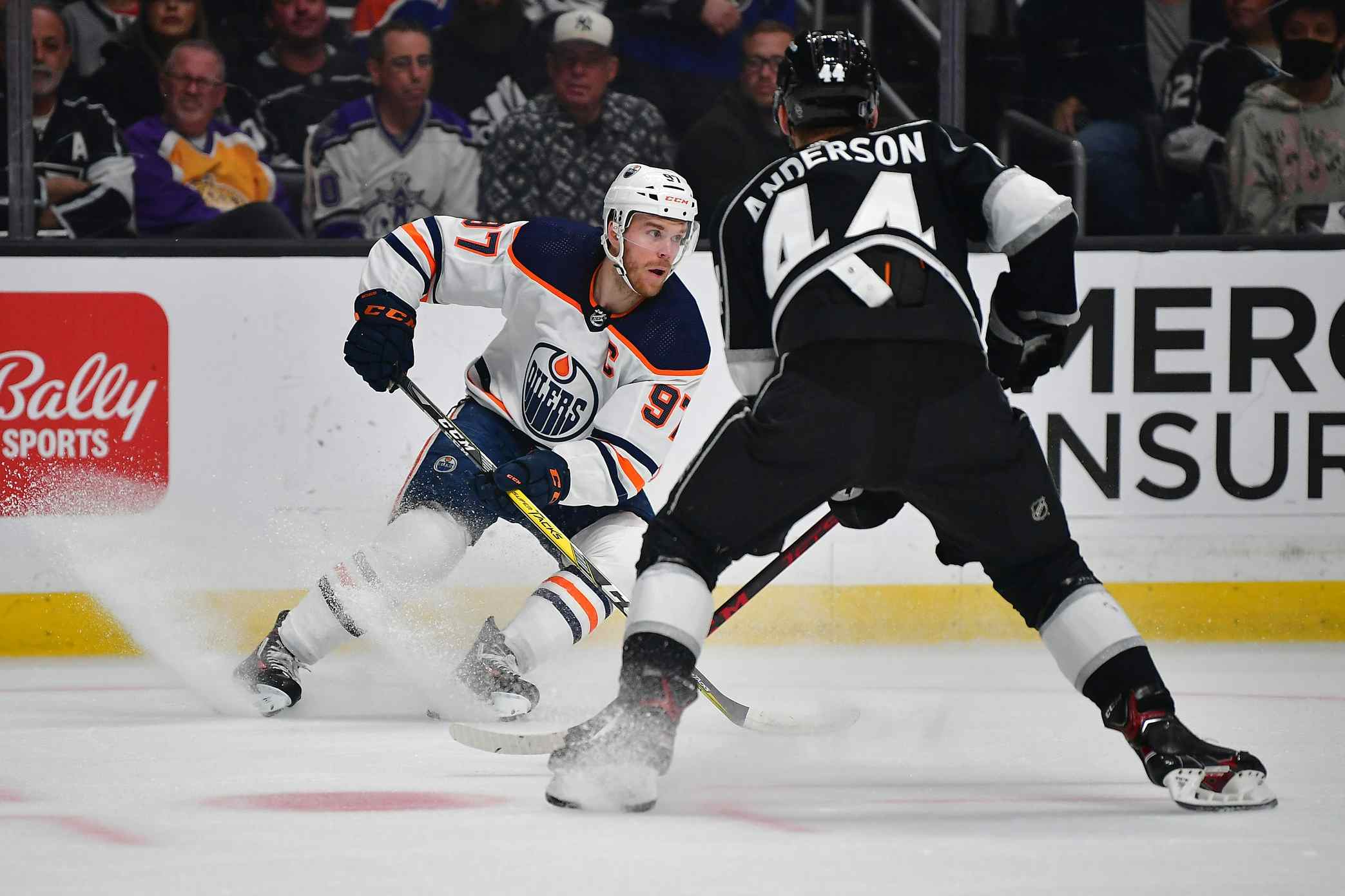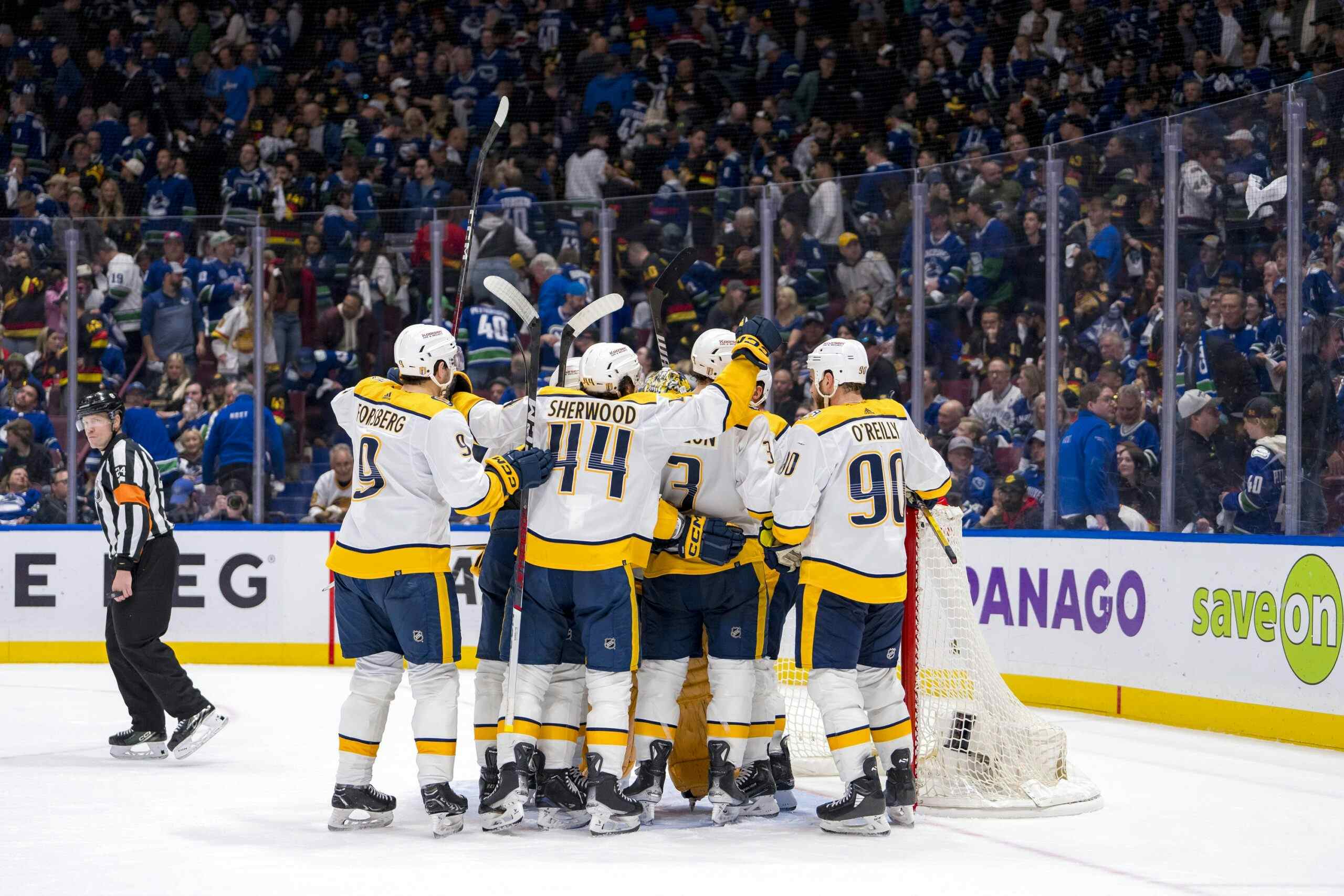Ten Points: Horcoff, Petrell, Landeskog, and around the league
1. Buying out Horcoff. If there’s an amnesty clause to kick off the next CBA, and particularly if the 2012-13 season is shortened or lost, I have almost no doubt that Shawn Horcoff will be bought out by the Oilers. In actual dollars, he’ll make $6 million in 2012-13, but he’s only going to make a total of $7 million over the last two years of his deal – the Oilers could buy that out for less than $5 million at the current rate of two/thirds.
The one thing that might stop them is if a low-budget team is willing to take on the $11 million in cap hit and $7 million in actual salary over the last two years of the deal. At $3.5 million/year in real dollars, Horcoff wouldn’t really be vastly overpaid, and for a team at the floor he adds $2 million/year in cap hit that the club wouldn’t have to pay for. The dynamics could shift dramatically under a new agreement, but for a team like Phoenix or Long Island, those last two years of Horcoff’s contract could have some value.
2. Why Petrell? One of the things I keep bumping my head against this off-season is the Oilers’ decision to re-sign Lennart Petrell. With Petrell’s presence possibly knocking one of Magnus Paajarvi or Teemu Hartikainen to the minors – both in my books superior players now – and at the same time not adding anything vital (he was the team’s number five penalty-killing forward last year) it’s not a move that makes much sense to me. Particularly since the fourth line played the role of chew-toy to the NHL last year and it’s been completely reunited and revived for 2012-13.

Gabriel Landeskog (Sarah/Wikimedia Commons/CC BY-SA 2.0)
3. Captain Landeskog. Yesterday, the Colorado Avalanche named 19-year old Gabriel Landeskog as the team’s captain, replacing Milan Hejduk. Hejduk, nearly tice Landeskog’s age, relinquished the ‘C’ and will now serve as an alternate. It’s a move that always raises eyebrows, and also one that some fans would like to see the Oilers imitate.
Personally, I’m reluctant to have an opinion because I don’t know Landeskog and I think whether or not a 19-year old can handle that kind of pressure is highly dependent on the individual involved. With that said, my mind instantly flashed back to what happened in major junior: in Kitchener, Landeskog was the 17-year old captain (rare) and the import captain (rarer still) of his junior team. Based on his past, if there’s a teenage NHL’er ready for that responsibility than Landeskog is it.
4. Last isn’t what it used to be. The chart below shows how bad the worst team in the NHL by points (in blue) and goal differential (red) has been over the last 20 years. The advent of the shootout and three point games has inflated point totals, but the big difference is the lack of recent expansion – of teams with triple-digit negative goal differential, almost all were expansion clubs (Ottawa, San Jose, Tampa Bay and Atlanta being the worst of the group). Pittsburgh shows up here, too: their minus-113 rating in 2003-04 is the worst in recent memory.

5. Free agency on July 10? Pierre LeBrun of ESPN (and virtually everywhere else) reports that the league has proposed bumping free agency from July 1 to July 10. LeBrun suggests that the NHLPA might not like the summer window for jobs growing even nine days shorter, but that doesn’t mena this isn’t a great idea. I’ve always thought it idiotic that the NHL has the draft, the league awards and the start of free agency all within a two-week window (toss in the awarding of the Stanley Cup, and it’s a three-week window). For a league that’s turning more and more into a year-long endeavor, putting a little bit of space only makes sense to maximize media coverage. This way, they also get to duck the July 1/July 4 holidays.
6. Attribution is a two-way street. Writers for mainstream publications (often correctly) have complained in the past that new media in general and blogs in particular fail to properly credit them for their material. Some blogs will just grab quotes without including a link (which is discourteous) or without listing the source (which is significantly worse). That brings me to the fantastic Russian Machine Never Breaks, which translated a story in a European newspaper about Michal Neuvirth, where the Capitals goaltender made some overly candid remarks.
RMNB’s story made big waves, and Neuvirth and the Capitals organization went into damage control. Interestingly, while referring specifically to the RMNB translation, articles on Sportsnet, NHL.com, the Capitals’ homepage, as well as elsewhere managed to comment at length on the comments without once mentioning the website that did the work.
The point: failing to attribute isn’t just a problem of blogs, amateurs, and people without editors. Some of the biggest names in hockey media have made the same choice to take material without crediting where they got their information. In the end, it comes down to individuals: regardless of where their material is appearing, are they willing to credit the people they got their information from.
Incidentally, the list of articles above that failed to credit RMNB comes from a recent article on that site – an article which includes a professional re-translation of Neuvirth’s original comments and shows that despite being a “fan blog” RMNB behaved professionally and properly throughout the whole incident.
7. Made by Crosby. Wandering the internet the other day, I came across a reference to Dany Roussin. Roussin, once upon a time, was a pretty decent forward for Rimouski of the QMJHL; he played there with Marc Pouliot and was drafted the year before Sidney Crosby joined the team – by Florida, in the seventh round. Once Crosby arrived, Roussin found himself as his regular winger – his goal totals jumped from 12 to 59 in that first season and he had 117- and 116-point seasons. Florida couldn’t get him under contract, so he re-entered the draft and got picked by Los Angeles – this time in the second round.
Ultimately, Roussin spent most of his entry-level contract playing in the ECHL, then left for France and now he’s just finished his third year with St. Georges of the of the Ligue Nord-Americaine de Hockey (LNAH). In 2011-12, he was the 5th-leading scorer for the St. Georges Cool 103.5 FM. He scored just over half as many goals as 42-year old ex-NHL’er Jesse Belanger, who played 246 games for five major-league teams (including half a dozen in Edmonton).

Zach Parise (rubyswoon/Wikimedia Commons/CC BY-SA 2.0)
8. The NHL is a business – but it also really isn’t. Why are NHL economics so bizarre? It’s actually quite simple, in my view: NHL teams are both businesses and vanity projects, and which of the two is dominant depends to no small extent on who the owner(s) of each team is/are. In Minnesota, there’s virtually no chance that Craig Leipold is going to get a $24 million return in 2012-13 on his $24 million investment in Zach Parise and Ryan Suter; it also seems doubtful that the return on that duo will average out to $15 million and change over the next 13 years. Those players were brought in to help the team win first, second and third; they were not brought in as part of a calculated investment decision.
That’s why the league is always pushing for more restrictions. Prior to the salary cap, players (according to the league) ate up 75 percent of league revenue – because most owners weren’t running their teams as businesses. If the NHLPA went away tomorrow and the free market reigned, there’s no doubt that the rich teams in the league would start the arms race once again and the poor teams would be unable to compete.
The league can’t stop owners from running their teams like fans rather than businessmen. All it can do is make the system so rigid that even without rational financial decisions the teams still make money.
9. The shattering of the NHLPA. It’s worth remembering that last time around, the NHLPA shattering into a million pieces wasn’t just a function of a season being cancelled – it also had to do with the acceptance of a cap. Some players – Jay McKee was one – asked on the record why the union agreed to a salary cap at the 11th hour when they steadfastly refused for months and months to even consider the idea. That reversal blew the union apart from the inside as much as anything else did.
This time around, there is no such single issue. The NHLPA is adamant that there will not be a rollback, but the NHL isn’t insisting on that mechanism. I doubt that the union will stand together through a cancelled season – and despite the bitter news of the last week, I doubt we’ll see a cancelled season – but it seems less likely to crash and burn the way it did last time.
10. Bobby Clark on becoming a general manager. Behind the Moves is a great book, and this quote from former Flyers general manager Bobby Clarke caught my eye:
[As a player] I had a great life. All of a sudden, I am sitting in the office and I would hear tge old teletype going, with the yellow paper; I had a secretary. I remember going home from work at 5 o’clock some days and just sitting on the couch, just feeling whipped, exhausted… It wasn’t like I had been physically training. Even when I physically trained, I was never tired. Now I was tired. I had to try and figure out how to negotiate a contract. There were no rules on that… for me, [becoming a GM] was the first time in fucking 20 years that I had a pen in my hand, really, other than signing my autograph.
What has always struck me about ex-players turning into general managers is how different the job descriptions are. I think the experience of being an NHL player is a great asset for any general manager – but I don’t think the most important qualification for a G.M. is a playing career, either.
Recently by Jonathan Willis
Recent articles from Jonathan Willis





